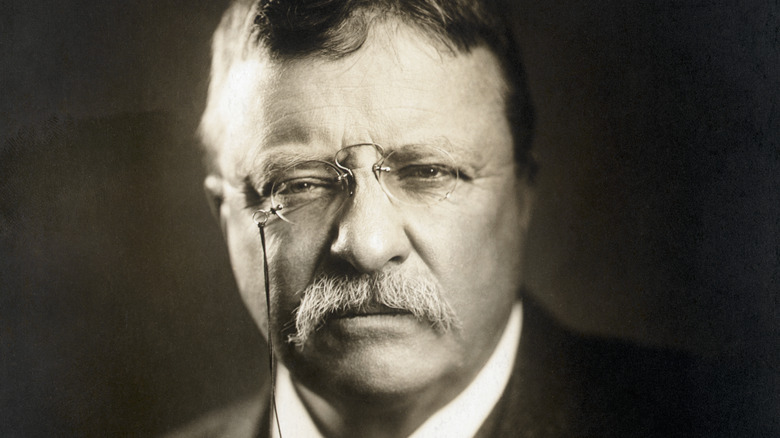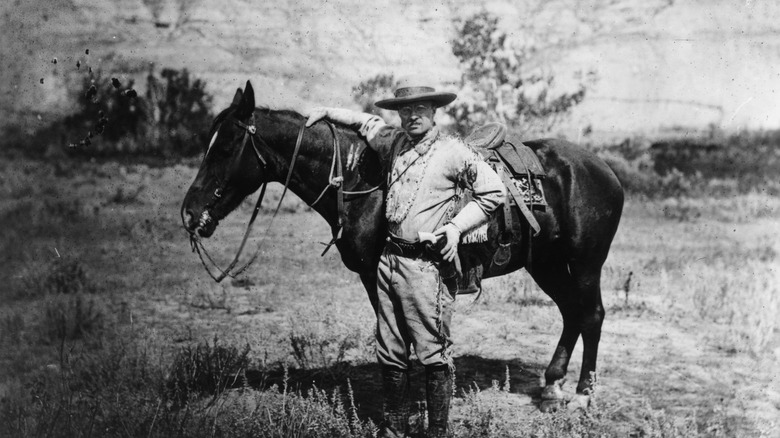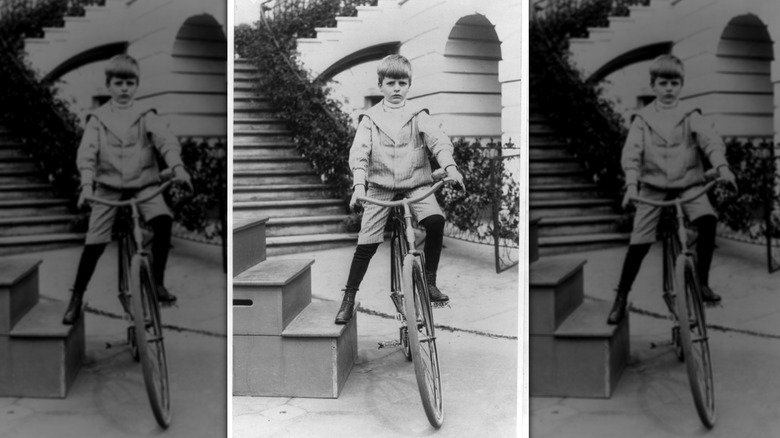Why Theodore Roosevelt Banned Christmas Trees In The White House
The presidency of Theodore Roosevelt had an inauspicious start, as he was parachuted into the Oval Office following the assassination of his predecessor William McKinley in 1901. However, the New York-born politician quickly made a name for himself. Having been hailed as a war hero for his actions in the Battle of San Juan Hill during the American-Spanish War, Roosevelt proved to be just as decisive in office. He spearheaded the process of mediation necessary to bring an end to the Russo-Japanese War — for which he won the Nobel Peace Prize — and pressed for greater trade links with the East by instigating the construction of the Panama Canal, one of the greatest feats of engineering of Roosevelt's day. He also enacted lasting reforms that profoundly altered the powers of the American government.
But President Roosevelt was also famous throughout his presidency for being a hunter and all-round outdoorsman. Despite hunting, he was also known for his love of nature, with a tale involving the politician taking mercy on a wild bear embuing him with the nickname "Teddy," after which teddy bears were later named. It was also this aspect of his personality that reportedly led to him making an otherwise strange decision regarding Christmas decorations in the White House: he refused to allow Christmas trees into the residence, despite having his six children living in the house during his presidency.
Roosevelt the Conservationist
Theodore Roosevelt was so obsessed with the American Great Outdoors that he is sometimes referred to as the "conservationist president," according to the National Park Service. Though originally a Republican, Roosevelt moved away from the party to form The Bull Moose Party later in his career, the progressive values of which are in keeping with his views on conservationism.
Roosevelt was an adept hunter, and he became incredibly concerned about his growing nation's excessive use of natural resources, particularly the felling of trees. As such, it is believed that this influenced his decision to disallow Christmas trees in the White House during his time in office, as the purely decorative tradition arguably constitutes an unnecessary felling of fir trees and therefore a misuse of resources. The Forest History Society notes that Roosevelt wasn't alone in his concern about unnecessary deforestation, and though Christmas trees were certainly a tradition prior to his administration, the practice was increasingly brought into question.
Archie Roosevelt's secret tree
Some White House sources claim that Theodore Roosevelt's opposition to Christmas trees is simply a myth, and that the presidential family simply didn't have the concept of bringing a fir tree into the house as part of their holiday celebrations. However, one story suggests that, though Roosevelt may not have enacted an official ban, his children were secretive about their desire to have their own Christmas tree.
As was noted in The Ladies' Home Journal during the Roosevelt administration, the first Christmas tree the Roosevelt family experienced was a small one, hidden in a cupboard, which was smuggled into the White House at the behest of the president's 8-year-old son, Archie. Though no direct reaction from the President is found in early sources, it seems that he must have found his son's enthusiasm endearing, as decorative trees became a family tradition thereafter, according to the Forest History Society.
Since then, Christmas trees have remained a part of most presidents' holiday celebrations, with the First Lady often taking responsibility for the tree's decoration and placement. As happened when Jill Biden received the White House Christmas tree in 2021, receipt of the fir is usually accompanied by pomp and ceremony, and delivered by a horse and carriage (via ABC News).


